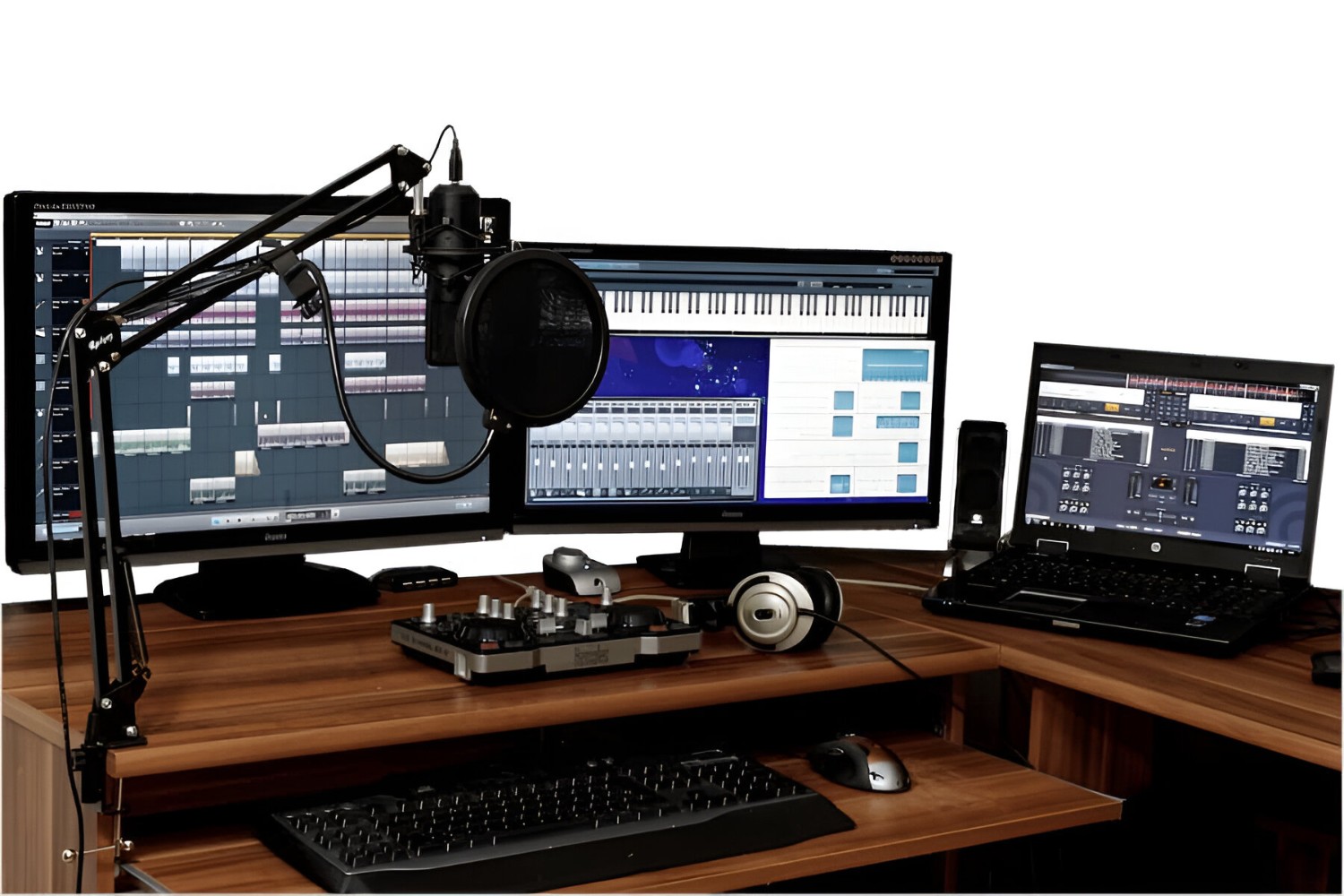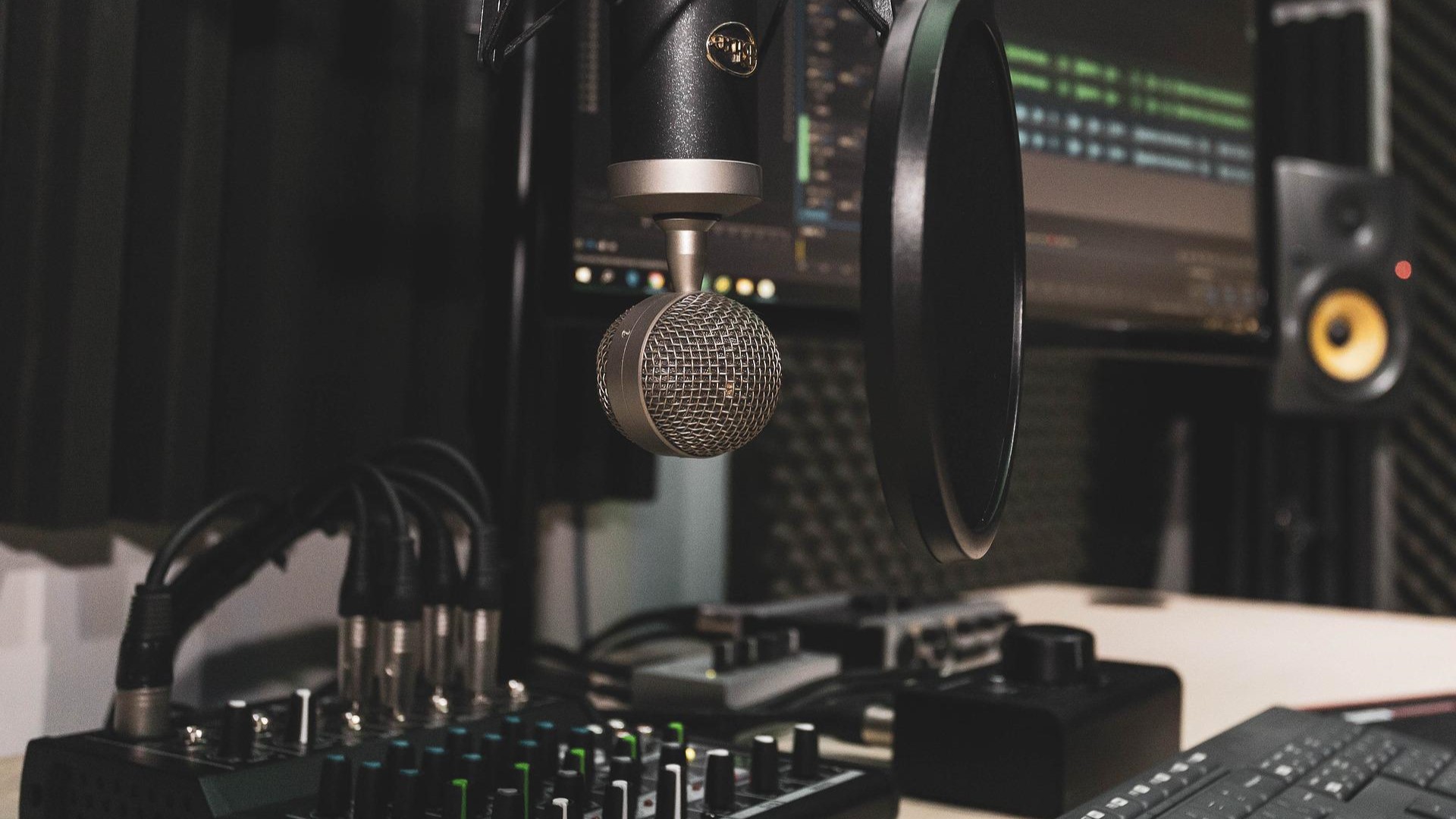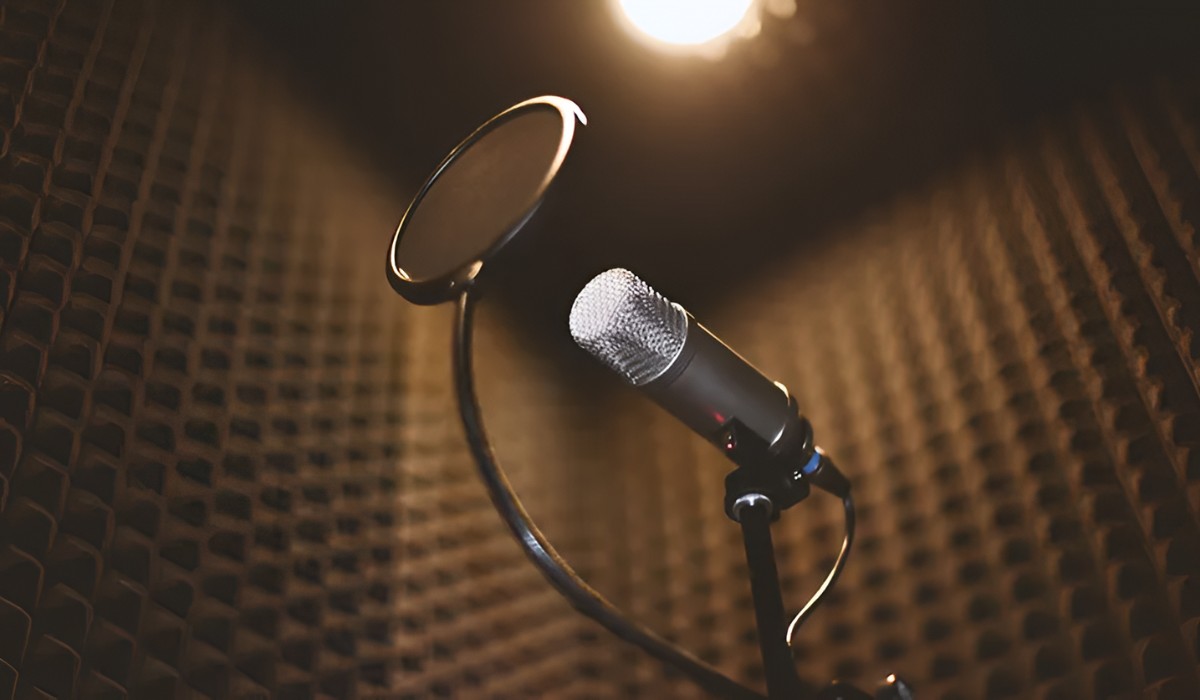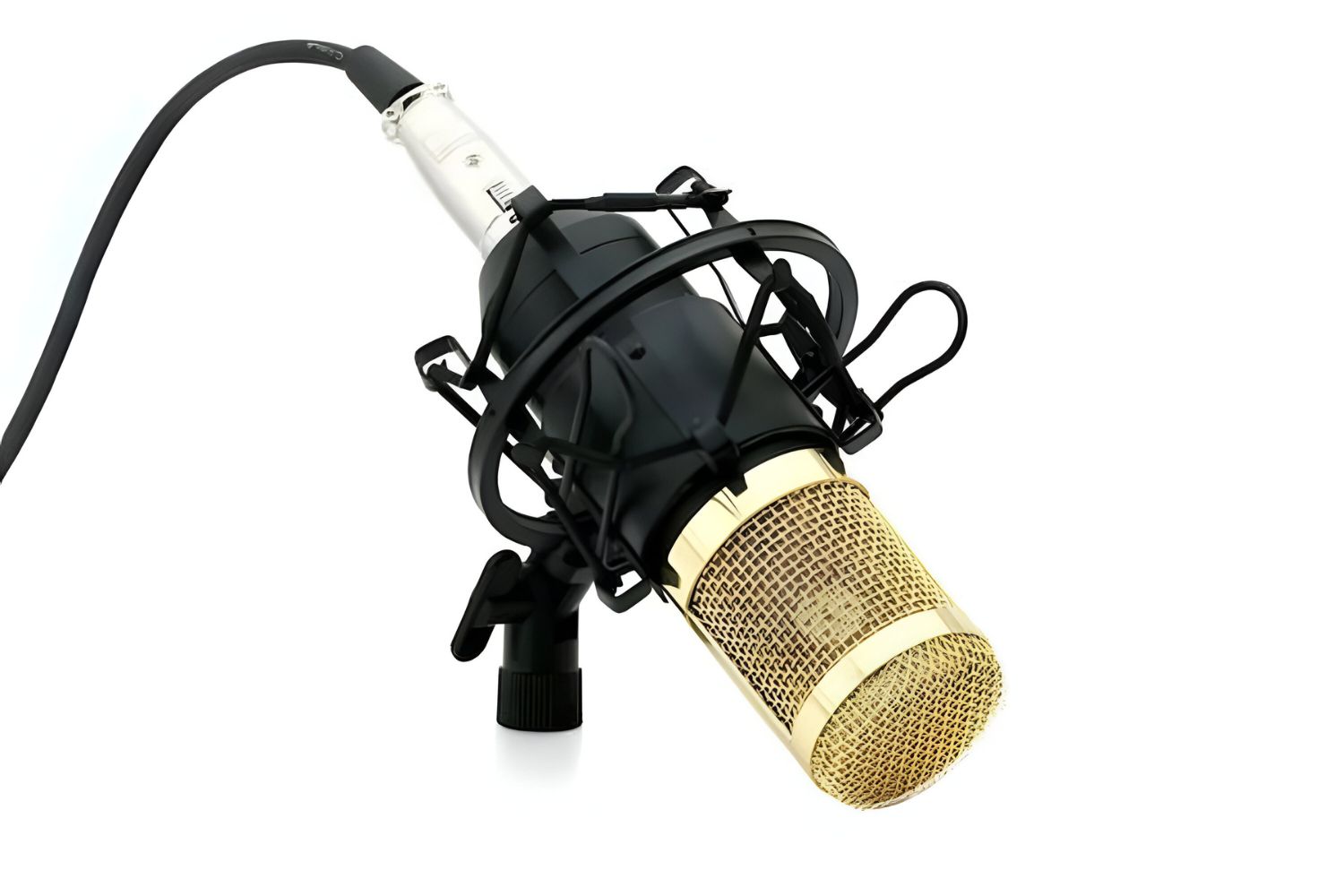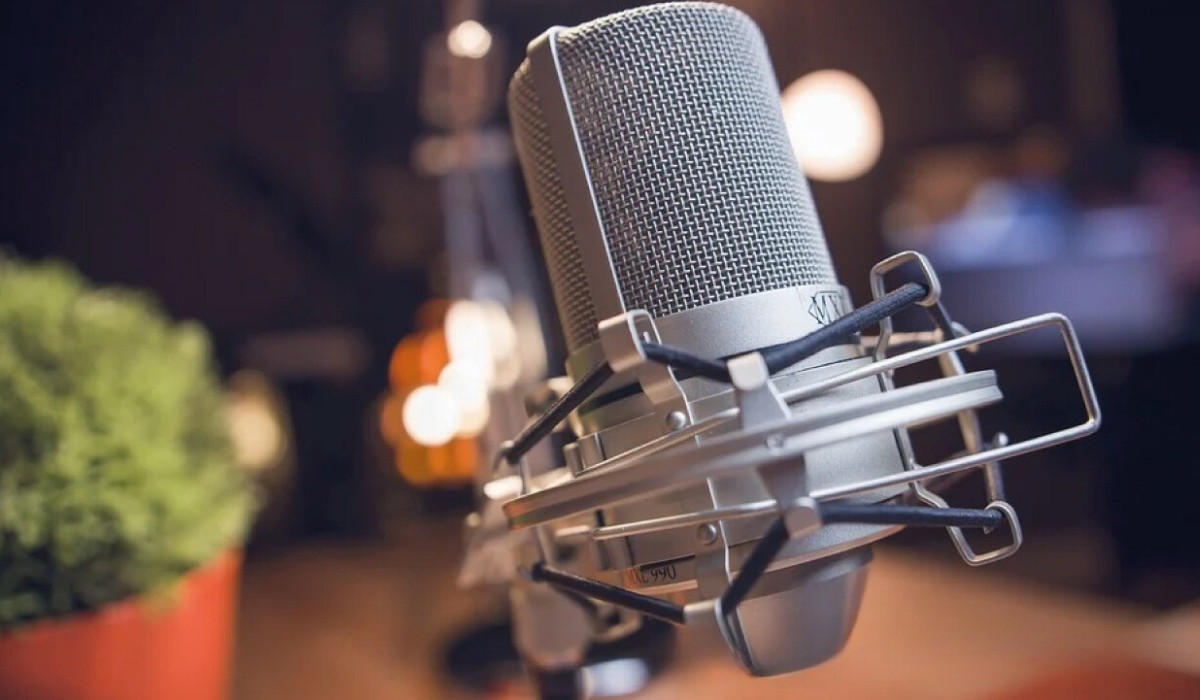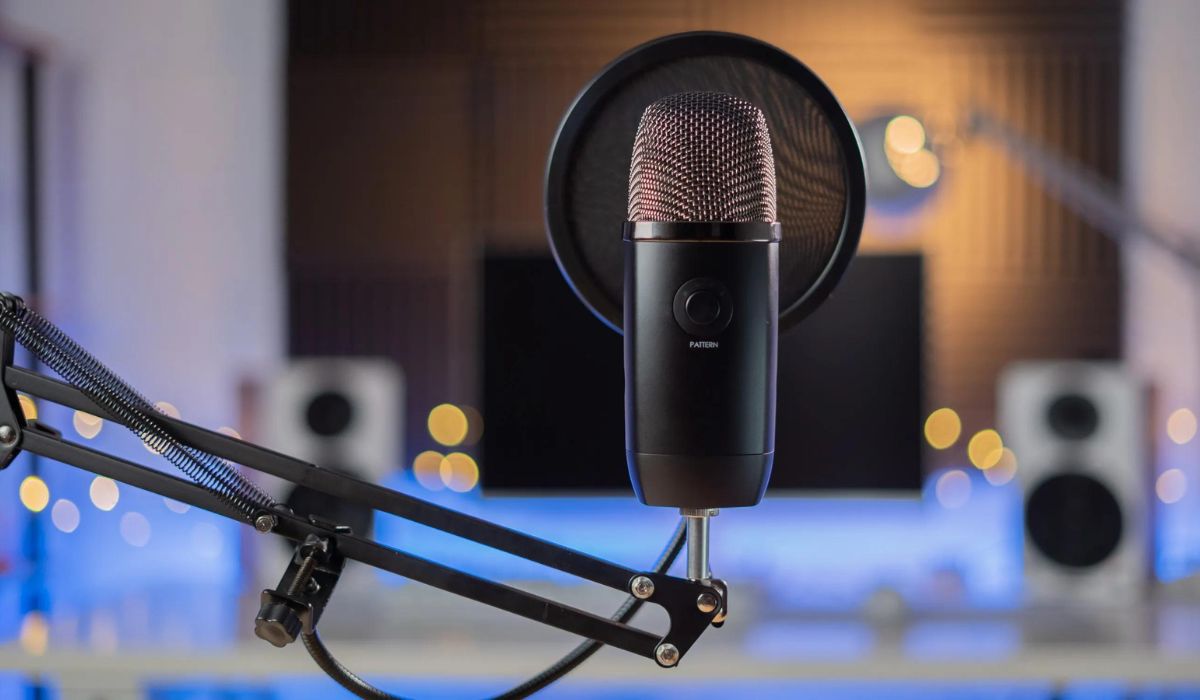Introduction
So, you've got your hands on a top-notch condenser microphone, and you're eager to dive into the world of professional audio recording. However, there's a slight hitch – your computer doesn't seem to recognize the microphone. Fret not, as this common issue has a range of potential solutions that can have you up and running in no time.
When your computer fails to recognize your condenser microphone, it can be frustrating, especially when you're raring to unleash your creativity through music production, podcasting, voiceovers, or online meetings. The good news is that there are several troubleshooting steps you can take to resolve this problem and get your microphone working seamlessly with your computer.
In the following sections, we'll delve into the essential steps to troubleshoot and resolve this issue. We'll start by checking the connections to ensure everything is properly set up, then move on to updating drivers, adjusting sound settings, and utilizing a USB audio interface if needed. Additionally, we'll explore troubleshooting hardware issues that may be causing the recognition problem. By the end of this guide, you'll be equipped with the knowledge to tackle this issue with confidence and get back to creating exceptional audio content.
Let's roll up our sleeves and dive into the troubleshooting process to get your computer to recognize your condenser microphone.
Check the Connections
Before delving into complex troubleshooting, it’s crucial to start with the basics. Ensure that all connections between your condenser microphone and your computer are secure and properly established. Here’s a step-by-step guide to checking the connections:
- USB or XLR Connection: If your condenser microphone uses a USB connection, verify that the USB cable is firmly plugged into both the microphone and an available USB port on your computer. For XLR-connected microphones, ensure that the XLR cable is securely connected to both the microphone and an audio interface or mixer, which is then connected to your computer.
- Power Supply: If your condenser microphone requires phantom power, confirm that it is receiving adequate power. Some microphones have an on/off switch for phantom power, so ensure it is activated if needed.
- Audio Interface: If you are using an audio interface, check that it is correctly connected to your computer via USB or another compatible connection. Additionally, ensure that the microphone is connected to the audio interface as per the manufacturer’s instructions.
- Multiple Devices: If you have multiple audio input devices connected to your computer, such as built-in microphones or other external microphones, ensure that the correct device is selected as the default input device in your computer’s audio settings.
After verifying these connections, restart your computer and check if the condenser microphone is now recognized. If the issue persists, proceed to the next troubleshooting steps to further diagnose and resolve the recognition problem.
Update Drivers
Outdated or corrupted drivers can often lead to compatibility issues between your condenser microphone and your computer. To ensure seamless recognition and functionality, it’s essential to keep your device drivers up to date. Here’s how to update the drivers for your microphone:
- Manufacturer’s Website: Visit the official website of the microphone’s manufacturer and navigate to the support or downloads section. Look for the latest driver or firmware updates specifically designed for your microphone model and your computer’s operating system.
- Automatic Updates: Some operating systems, such as Windows and macOS, offer automatic driver updates. Check your system settings to enable automatic driver updates if available. This can ensure that your microphone’s drivers are regularly updated without manual intervention.
- Device Manager (Windows): On Windows, you can update drivers through the Device Manager. Right-click on the Start button, select “Device Manager,” and locate your microphone under the “Audio inputs and outputs” or “Sound, video, and game controllers” section. Right-click on the microphone, select “Update driver,” and follow the on-screen instructions to search for and install the latest driver updates.
- System Preferences (macOS): If you’re using a Mac, navigate to “System Preferences,” select “Software Update,” and check for any available updates. Additionally, you can visit the “Audio MIDI Setup” utility to verify the recognition and configuration of your microphone.
After updating the drivers, restart your computer and check if the condenser microphone is now recognized and functioning as expected. If the issue persists, we’ll explore additional troubleshooting steps to address the recognition problem.
Adjust Sound Settings
Fine-tuning the sound settings on your computer can often resolve recognition issues with condenser microphones. Here’s a comprehensive guide to adjusting the sound settings for optimal compatibility:
- Default Recording Device: Access your computer’s sound settings and ensure that your condenser microphone is set as the default recording device. On Windows, right-click the speaker icon in the system tray, select “Open Sound settings,” and navigate to the “Sound control panel.” Under the “Recording” tab, set your microphone as the default device. On macOS, go to “System Preferences,” select “Sound,” and choose the microphone as the default input device.
- Input Levels: Adjust the input levels to ensure that your microphone’s signal is neither too low nor too high. In the sound settings, locate the input level or gain controls for your microphone and set them to an appropriate level. Avoid setting the input levels too high, as this can result in distorted audio.
- Exclusive Mode: Some applications or system settings may have exclusive control over the microphone, preventing other software from accessing it. Check the sound settings and application preferences to disable exclusive mode or permissions that restrict the microphone’s usage.
- Enhancements and Effects: Disable any audio enhancements or effects that may interfere with the microphone’s recognition. These settings can be found in the sound control panel or within specific application preferences.
- Driver Compatibility: Verify that the microphone’s drivers are compatible with your computer’s operating system. Incompatibility between the drivers and the operating system can lead to recognition issues. If necessary, reinstall the drivers or seek updated versions compatible with your system.
After adjusting the sound settings, test your condenser microphone to see if it is now recognized and functioning correctly. If the issue persists, we’ll explore alternative solutions to troubleshoot the recognition problem and ensure seamless integration with your computer.
Use a USB Audio Interface
If your computer continues to have trouble recognizing your condenser microphone, utilizing a USB audio interface can serve as an effective workaround. A USB audio interface acts as an intermediary device between your microphone and your computer, offering enhanced connectivity and control over audio inputs. Here’s how to incorporate a USB audio interface into your setup:
- Selection and Compatibility: Research and select a USB audio interface that is compatible with your condenser microphone and computer operating system. Ensure that the interface provides the necessary input options, such as XLR or 1/4″ connections, to accommodate your microphone.
- Connection and Configuration: Connect your condenser microphone to the USB audio interface using the appropriate cables or connectors. Then, connect the USB audio interface to your computer via a USB cable. Once connected, configure the audio interface as the default input device in your computer’s sound settings.
- Driver Installation: Install any required drivers or software for the USB audio interface as per the manufacturer’s instructions. These drivers facilitate seamless communication between the interface and your computer, ensuring proper recognition and functionality of the connected microphone.
- Signal Monitoring and Control: USB audio interfaces often offer features such as gain control, phantom power, and real-time signal monitoring. Familiarize yourself with these controls and utilize them to optimize the audio input from your condenser microphone, ensuring clear and distortion-free recordings.
- Application Integration: Once the USB audio interface is set up, ensure that your recording or streaming applications recognize and utilize the interface as the primary audio input device. Adjust the application settings to select the USB audio interface and configure any specific input parameters.
By integrating a USB audio interface into your setup, you can bypass direct computer recognition issues and gain greater control over your condenser microphone’s input. This approach can often resolve compatibility and recognition challenges, allowing you to focus on creating exceptional audio content without technical hindrances.
Troubleshoot Hardware Issues
When encountering persistent recognition issues with your condenser microphone, it’s essential to address potential hardware-related factors that may be contributing to the problem. By systematically troubleshooting hardware issues, you can identify and resolve underlying causes that hinder your computer’s ability to recognize the microphone. Here’s a comprehensive approach to troubleshooting hardware issues:
- Physical Inspection: Begin by visually inspecting the microphone, cables, and connectors for any signs of damage or wear. Ensure that the USB or XLR cables are not frayed, bent, or damaged, and that the microphone’s connectors are clean and free from debris.
- Alternate Connections: If possible, test the condenser microphone with alternative cables or connectors to rule out potential issues with the existing connections. Utilize different USB ports or audio interface inputs to determine if the recognition problem persists across multiple connection points.
- Testing on Another System: Connect the condenser microphone to a different computer or audio recording device to ascertain whether the recognition issue is specific to your primary computer. This step helps determine if the microphone itself is functioning correctly and if the problem is isolated to your computer system.
- Power Source and Phantom Power: If your microphone requires phantom power, verify that the power source, such as an audio interface or mixer, is providing adequate phantom power. Additionally, test the microphone with an alternative power source to confirm proper functionality.
- Driver and Firmware Updates: Ensure that the microphone’s drivers and firmware are up to date by visiting the manufacturer’s website and downloading any available updates. Updated drivers can address compatibility issues and enhance the microphone’s recognition by your computer.
By diligently troubleshooting hardware-related factors, you can pinpoint the root cause of the recognition issue and take targeted measures to resolve it. Addressing hardware issues methodically can lead to a more stable and reliable connection between your condenser microphone and your computer, ultimately ensuring seamless recognition and optimal performance.
Conclusion
Resolving recognition issues between your computer and condenser microphone is crucial for unleashing your creativity in various audio applications. By following the troubleshooting steps outlined in this guide, you can overcome the frustration of unrecognized microphones and ensure seamless integration with your computer. From checking connections to troubleshooting hardware issues, each step is designed to systematically address potential obstacles to recognition and functionality.
Remember, a thorough inspection of physical connections, regular driver updates, and meticulous adjustment of sound settings can often resolve common recognition issues. In cases where direct recognition proves challenging, the utilization of a USB audio interface can provide a reliable workaround, offering enhanced control and compatibility.
It’s important to approach troubleshooting with patience and persistence, as hardware and software interactions can sometimes be intricate. By systematically ruling out potential issues and implementing the recommended solutions, you can establish a stable and reliable connection between your condenser microphone and your computer.
Ultimately, the goal is to empower you to harness the full potential of your condenser microphone, whether for professional music production, podcasting, voiceovers, or online meetings. By leveraging the troubleshooting techniques outlined in this guide, you can confidently address recognition issues and focus on creating exceptional audio content without technical hindrances.
With a solid understanding of the troubleshooting process, you can navigate recognition challenges with ease, ensuring that your computer recognizes and seamlessly integrates with your condenser microphone, allowing your creativity to flow unhindered.







